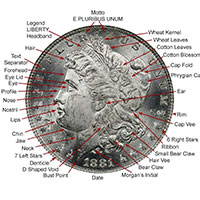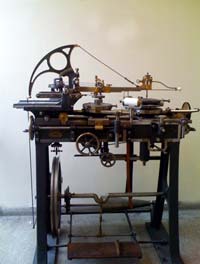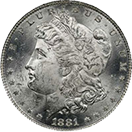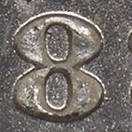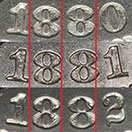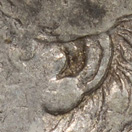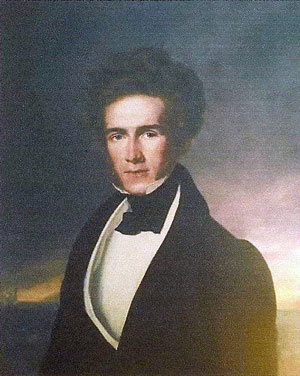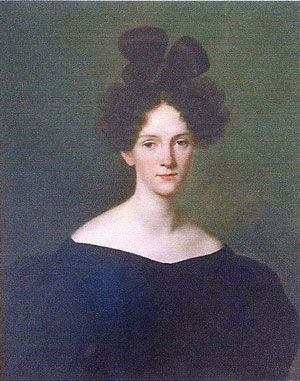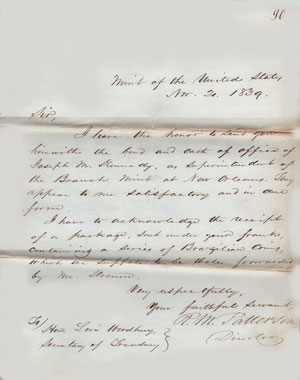
December 2020 - Welcome
Sources
Search
Contact
Home
Welcome
Click on year to expand
2022
2021
2020
2019
2018
2017
2016
2015
Welcome
Joseph M. Kennedy
Life at the Mint
As we ended the year and look back a lot happened and 2020 is proving to be quite busy, even with the COVID quarantine.
![]()
![]() LVA Submissions
LVA Submissions
We have five coins to send to Leroy for analysis and that needs to get going again now that Leroy seems to be taking submissions.
![]()
![]() VSS Submissions
VSS Submissions
We have twenty coins to send to JB for VAM analysis and photography, but like everyone else the world seems to be in slow motion right now.
New Orleans Supervisors
The New Orleans Mint
The New Orleans Mint was always a source of fascination as it went through various supervisors and employees. Often these came in rapid succession as politics and/or honesty came into question.
But the Mint enjoyed relative stability for the ten year period from 1840 to 1850. The forced retirement of David Bradford opened the door for Joseph M. Kennedy to assume the role of the second Mint Supervisor.
The Kennedys
Today if we mention Joseph and Rose Kennedy we naturally think of the parents of President John F. Kennedy. But there was another couple with the names of Joseph and Rose Kennedy and that is our second Mint Supervisor in New Orleans.
Joseph M. Kennedy was born in New Orleans
When married in November 1839 in New Orleans, her maiden name was Sarah Ann Mary Withers, but apparently nicknamed "Rose." She was born in Kentucky in 1807 and moved to New Orleans after marrying Joseph Kennedy. She died at the close of the Civil War in 1865 in New Orleans.
Apparently they had eight children, six daughters and two sons.
![]()
Let's not forget how important political connections were in the appointment of Mint Supervisors in New Orleans. We have already seen how important this was to David Bradford, but it seems to have been just as important for Joseph Kennedy.
Kennedy was the son of Thomas Seilles Kennedy (1776-1831) and Sophia Meisson (1785-1853). Thomas S. Kennedy served as Clerk of the Parrish of New Orleans. More importantly he served as an advisor to Governor William Charles Cole Claiborne, the first Governor of Louisiana, and this led to his appointment as clerk.
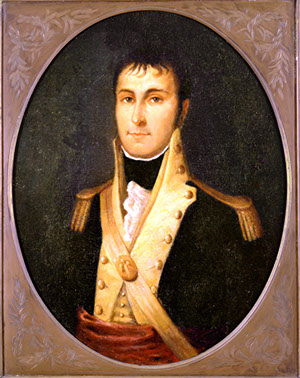
Claiborne was famous for his work in overseeing the transfer of the land in the Louisiana Purchase to the United States. (Believe it or not, this is the great-great-great-grandfather of Liz Claiborne). This is the same governor who offered a $500 reward for the capture of the pirate Jean Lafitte only to have Lafitte offer a $15,000 reward for capture of the governor.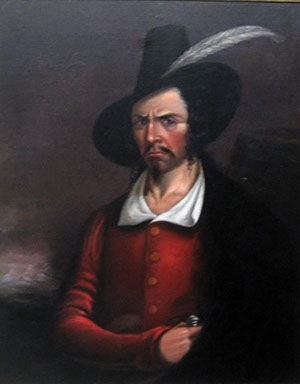
So New Orleans' colorful history was alive and well during this early era.
Thomas S. Kennedy was also appointed by Claiborne to the rank of Lieutenant in the First Regiment of the State Militia during the War of 1812. When Governor Claiborne contracted yellow fever in late 1804 Kennedy was one of the important figures in maintaining continuity in the Governor's office. This alone would have raised his stature in Claiborne's eyes.
So the exit of David Bradford from the Superintendent position at the Mint opened the door to a second political appointment. This one seems to have been less controversial and lasted a decade.
![]()
In a letter to the Secretary of the Treasury, Levi Woodbury, the Mint Director R. M. Patterson acknowledged the appointment of Joseph Meisson Kennedy to the post of Superintendent of the New Orleans Mint on November 20, 1839.
The New Orleans paper carried a brief announcement that also identified John Leonard Riddell as the new Melter and Refiner, and Philes B. Tyler as the new Coiner. From the previous problems with the administration of David M. Bradford we might assume these new employees were a part of the new administration. However, James Maxwell, the previous Melter and Refiner; and Rufus Tyler, the Coiner, both died of Yellow Fever in 1839.
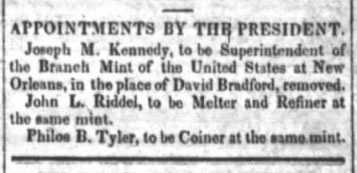
We cannot find that Joseph M. Kennedy had any special qualifications to become Superintendent of the Mint. So it is likely his appointment was a political gift for his father's service to Governor Claiborne. But he presided during an "interesting" term as the second supervisor.
![]()
The appointment of John Riddell was a good one in many regards. Riddell was somewhat of a genius in his field. He served in this capacity from 1839 until 1848. He also wrote botanical studies and played a key role in the development of the binocular microscope. He invented several machines for Mint usage that remained in service long after his death.
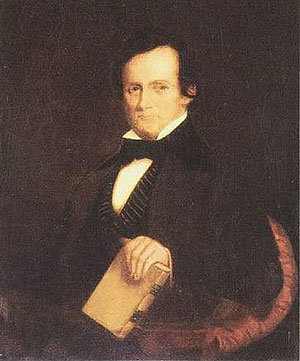 He wrote on a wide range of topics and made contributions to the study of yellow fever. Modern day biographies show him to have been a botanist, science lecturer, numismatist, politician, science fiction author, and inventor. He received his M.D. from Cincinnati College in 1836.
He wrote on a wide range of topics and made contributions to the study of yellow fever. Modern day biographies show him to have been a botanist, science lecturer, numismatist, politician, science fiction author, and inventor. He received his M.D. from Cincinnati College in 1836.
But Riddell was not without controversy and he was known to have open conflicts with coworkers. He was one of the mint officials provided with living accommodations within the Mint. At one point he was accused of killing his wife in their Mint apartment. He defended his honor by whipping his accuser on the piazza of his boarding house.
Riddell became even more controversial during the closing days of the Civil War. New Orleans fell back into Union hands quickly and really had a short-lived life within the Confederacy.
However, in November 1863 Riddell claimed to have won the election to the post of Governor of Louisiana. In January of 1864 he had himself sworn in as Governor by a local Justice of the Peace.
At the time Louisiana was still under Federal control and the military Governor was George F. Shepley. Riddell's claim to the Governor's position was rejected by Congress during the course of a contested House election.
![]()
Also mentioned with the appointment of Kennedy in 1839 is Philos B. Tyler. This is the half-brother of Rufus Tyler the Coiner who died in 1839. Rufus Tyler was married and had children. Philos was the executor of Rufus' will and had sole discretion of the disposition of the estate.
But in the will of Rufus Tyler he leaves his patent rights to "Counting and Engraving Machines" to a son, William. So appointing Philos to the position of Coiner may have been a defensive move on the part of Kennedy to protect use of the equipment. Half the profits from the patent went to William and the other half to his wife and other children.
![]()
New Orleans and Louisiana are always full of interesting and colorful characters. It would appear that Joseph Kennedy had his hands full maintaining control of the Mint employees.
![]()
Living in the Mint
The Kennedys seemed to have a certain sense of style and an expectation of using government property as their own. It was not unusual in those days for the Mint to furnish living accommodations for the officers holding the higher position, including the Superintendent.
It has become difficult to ascertain if the family of the Superintendent lived in the main Mint building or in an attached apartment. By today's standards living within the Mint seems strange for a number of reasons.
- How would you keep children away from the equipment?
- The noise from the coining operations would seem to be unbearable.
- How would a family of nine be accommodated?
- Where would kitchen facilities reside without fire danger?
So the possibility of the Kennedys being offered offered a Mint apartment but declining must be considered as more practical, but not proven
But a salary of $2,500 in 1840 would be roughly equivalent to $75,000 today. This is not a lot of money for a family of ten, so living in the Mint might have been a necessity. Adding to this confusion is the note that five of the children were born during his tenure as superintendent.
![]()
The 1850 census lists the family as :
Joseph M. Kennedy 43
Sarah Ann Kennedy 42
Josephine Kennedy 18
Rose Kennedy 16
Medora Kennedy 12
Martinne Kennedy 11
Sarah Ann Kennedy 9
Joseph M. Kennedy 7
Alice Kennedy 4
Withers Kennedy 2
This census is important because it identifies Josephine and Rose and their ages.
![]()
By today's standards the use of public spaces, particularly buildings, for private use would be frowned on and instantly known through social media. But in 1850 the practice was apparently common, or at least tolerated.
In 1850 two of the Kennedy daughters, Rose and Josephine, were of "coming out" age and the Kennedy's used the Mint and employees to host an appropriate event.
We get a rare glimpse of the life in New Orleans in those days from a book titled "Social Life in Old New Orleans: Being Recollections of My Girlhood" by Eliza Ripley. Published in 1912 this small book recalls the event in great detail.
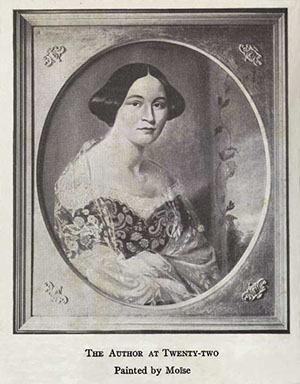
In her book Ms. Ripley describes the event in chapter 16, pages 116 through 119. The language and customs of the era are all but foreign to us now, but it was a vastly different world in antebellum New Orleans.
![]()
FANCY DRESS BALL AT THE MINT IN 1850
I HAVE never heard of a society ball in a United States mint building, before nor since, but the Kennedys, who gave this one, were a power in the social world at that time—and ambitious beyond their means. Rose and Josephine, the two oldest of quite a flock of daughters, were debutantes that winter. Both were handsome and accomplished Rose was also a famous pianist, even in those days when every woman strove to excel in music, and it was customary to entertain even a casual caller with a sonata. Gottschalk declared Rose Kennedy rendered his famous "Bamboula" better than he did himself, and to hear her was to rise and
dance.
Who was at that fancy ball? Everybody who was anybody in the fifties. The Eustises—George and Mathilde, George as "a learned judge" (be was son of Chief Justice Eustis), and Mathilde in pure white and flowing veil was a bewitching nun. George, years after, married the only child of the banker-millionaire, W. C. Corcoran, in Washington.
Mathilde married Alan Johnson, an Englishman; both are long since dead. There was Mrs. John Slidell, of "Mason and Slidell" fame, a "marquise," in thread lace and velvet, her sisters, the Misses Deslonde, "peasant girls of France." Mathilde Deslonde became the wife of Gen. Beauregard, and her sister, Caroline, married Mr. R. W. Adams. All three sisters are with the departed.
Col. and Mrs. John Winthrop, "gentleman and lady of the nineteenth century," the jolly colonel announced. Who fails to recall, with a smile, the Winthrops, who lived in Royal Street, near Conti; near neighbors of the - long departed—Bonfords? The genial colonel became a tottering old man, asking his devoted wife "who and where are we?" before he peacefully faded away. Young De Wolf of Rhode Island, nephew of Col. Winthrop's, "an Arab sheik," wore probably the only genuine costume in the room—a flowing robe that was catching in every girl's coiffure, and every man's sword and spurs, in the dance.
All the gilded youth who wanted boisterous fun, and no jury duty, were firemen, in those days of voluntary service. Philippe De la Chaise wore his uniform. He later married Victoria Gasquet, and was relegated to a "back number" shortly after.
I make no special mention of the chaperons, but, Creole like, they were present in force. Cuthbert Slocomb was a mousquetaire, and Augusta, in red and black, "Diablotan," a vision of beauty and grace. She married the Urquhart mentioned in "Musical History of Louisiana," as the father of Cora Urquhart Potter. Mr. Urquhart died years ago, but his widow survives. She lives with her daughter at Staines on the Thames, in a stone house that was a lodge of Windsor Castle in the time of Henry VIII. Cuthbert Slocomb married a Miss Day; his widow and daughter, Countess di Brazza, survive him. Ida Slocomb was the noted philanthropist of New Orleans, the widow of Dr. T. G.
Richardson.
There was the stately Mrs. Martin Gordon chaperoning her exceedingly pretty sister, Myrtle Bringier, who became the wife of Gen. Dick Taylor, and whose descendants are among the few of those mentioned above still living and reigning in New Orleans
society.
The mint building was made ample for the gay festivities by utilizing committee rooms, offices and every apartment that could be diverted for the crowd's comfort—so, we wandered about corridors and spacious rooms, but never beyond the touch of a gendarme—officers, soldiers, policemen at every step. These precautions gave a rather regal air to the whole affair.
The belles retired to their boudoirs for a season, but the beaux had to go to business, and what a sight some of them were for a whole week after the fancy dress ball! They had hired costumes from members of the French opera troupe, and their faces were "made up" with rouge that could not be washed off; had to wear off in a purplish stain. My brother represented Louis XIV on that occasion, and I remember he scrubbed his cheeks until he made them almost raw. Of no avail. In time the pinkish, purplish tint gradually disappeared.
Shortly after that grandest and most unique entertainment Mr. Joe Kennedy's term expired and he retired into private life. Beautiful Rose fell into a decline and died early. What fortunes befell that family I know not. They seem to have faded away. The Kennedys were a large family in those days, closely allied to the Pierce and Cenas families, all of which were socially prominent. And now their names are "writ in water." I should like to know how many of this old Creole society are living today! I was eighteen, one of the youngest of the group, in the fifties.
![]()
Post Mint Events
Joseph Mession Kennedy retired as Superintendent of the New Orleans Mint in 1850. There is no documentation concerning his departure, but he was only 44 and may have wanted to pursue other occupations, or tired of the rigors of running the Mint. It may also be that the event described above was indicative of his social climbing ambitions and he angered Washington officials. We will never know for sure.
He continued to live in New Orleans until his death in 1876 at the age of 70.
![]()
Getting Started
Collecting The 1881-O
The 1881-O VAMs
